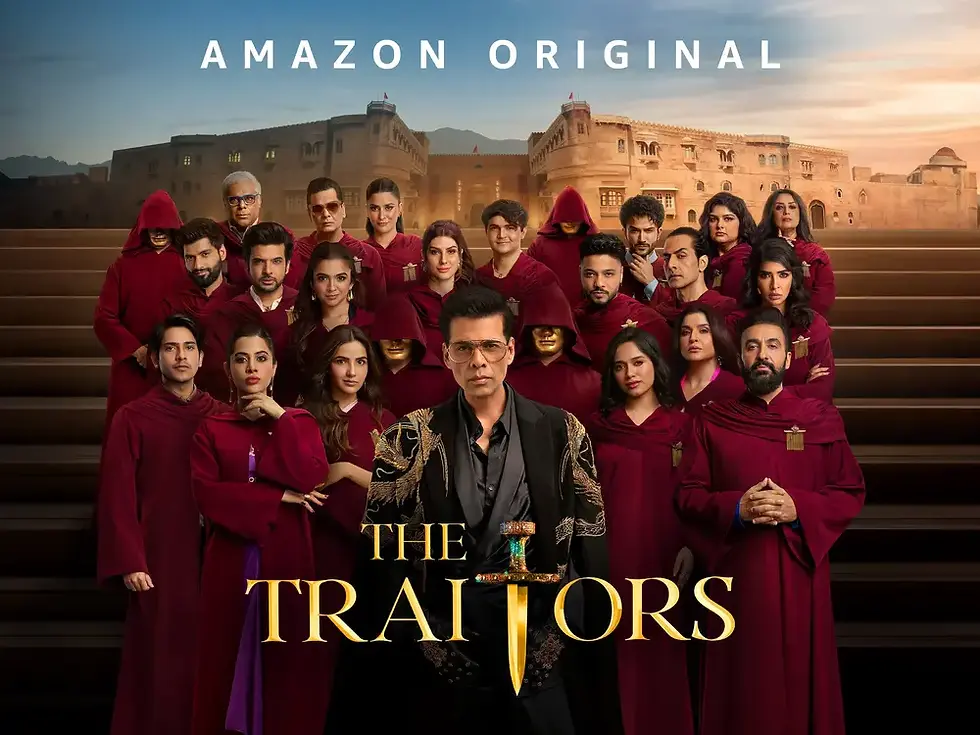India Just Won Wimbledon (Without Playing a Match)
- radhika-sinha

- Jul 18
- 3 min read
For the past two weeks, my feed has been flooded with white linen, polished lawns, and a sprinkle of star power – not from the tennis matches, but from Wimbledon’s courtside fashion parade. As someone who’s never quite followed sports, I found myself scrolling not for the scores, but for the sartorial shots of Jahnvi Kapoor in Miu Miu, or Sonam Kapoor in Dior. Wimbledon 2025 felt less like a sporting tournament and more like a carefully curated luxury marketing moment – and India was at the centre of it.

The “Cannefication” of Wimbledon
If Cannes has become the annual gold standard for brand placement and celebrity visibility, Wimbledon is fast becoming its quieter, chicer cousin. Unlike Cannes, which is showy and loud, Wimbledon brings with it a different kind of value: refined opulence, global legitimacy, and elite proximity. For luxury brands targeting India – now the world’s fastest-growing consumer base for premium goods – this was more than a photo-op. It was a strategy.
In 2024, Bain & Company reported that India’s luxury market is expected to hit $200 billion by 2030, growing at a CAGR of over 12%. It’s not just HNIs (High Net-Worth Individuals); a rising urban middle class, aspirational Gen Z, and increased global exposure are fueling this surge. No wonder then, that global maisons are now treating Indian celebrities as more than just regional influencers – they’re brand conduits.
Influencers, not just attendees
Take Priyanka Chopra, a Ralph Lauren regular, who didn’t just attend – she dominated the conversation. Jahnvi Kapoor’s quiet luxury in Miu Miu and Sonam Kapoor’s Dior moment weren’t random styling decisions; they were proof that luxury labels see Indian talent as globally resonant.
Even lesser-known names like Karishma Swali of Chanakya School of Craft (spotted in archival Chanel) are now being positioned for global storytelling – a sign that heritage meets luxury is an increasingly bankable narrative.
This is the new age of “access marketing.” It’s not about endorsements anymore. It’s about being seen in the right seats at the right events — and what you wear while you’re there.

India: From Buyer to Market Maker
There was a time when Indian celebs were dressed by luxury brands for international visibility. Now, brands are coming to India. Dior’s pre-fall show at the Gateway of India in 2023, or the NMACC opening gala that saw Zendaya, Tom Holland, and Gigi Hadid rubbing shoulders with local royalty, were not isolated events. They were signals. India is no longer just a consumer; it’s a culture-shaping force.
In 2023, Louis Vuitton clocked a 38% YoY increase in India sales
Gucci, after opening stores in Mumbai and Delhi, reported its highest-ever engagement rates from Indian digital audiences
Chanel is planning a brand experience centre in South Asia, aimed at tapping into the bridal and festive luxury calendar.

A New Kind of Cultural Diplomacy
Luxury now sits at the intersection of sport, culture, and social media. Events like Wimbledon allow for subtle yet powerful positioning. A front-row seat becomes an unscripted ad campaign, often generating more ROI than traditional spots. Think of it as the fashion week of elite leisure — where the brand is the lifestyle, and the consumer is the audience andthe advertiser. When Indian celebs attend, they don’t just make personal statements — they signal India’s new cultural capital. We’re no longer looking to the West for validation. We’re collaborating as equals, often leading the trend.
India Has Entered the Chat
Wimbledon 2025 wasn’t just a tennis tournament. It was an inflection point. The takeaway for brand strategists and marketers? It’s time to move beyond performance media and think of cultural presence as a media format. India’s audience is hyper-aware, digitally connected, and aspirationally driven. If your consumer sees their cultural icons at Wimbledon or Cannes — not as spectators, but as participants — your brand automatically earns that halo effect.
Luxury today is not about price tags. It’s about storytelling, access, and subtle influence.
From Cannes to couture weeks, and now Centre Court, India is stepping into a role far more powerful than "emerging market."
We are the market to watch. And the world, quite literally, is watching.



Comments